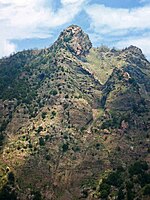Villa of Augustus
2024 archaeological discoveriesArchaeological sites in CampaniaAugustusHarv and Sfn no-target errorsHouses completed in the 1st century ... and 3 more
Roman sites of CampaniaRoman villas in ItalyVillas in Campania

The Villa of Augustus (Latin: Villa Augustae) is a villa in Somma Vesuviana that was owned by Augustus, the first emperor of Rome. Literary sources detailed the villa as the site where Augustus died. In April 2024, archaeologists from the University of Tokyo claimed to have discovered the villa after excavations on its purported location that started in 2002.
Excerpt from the Wikipedia article Villa of Augustus (License: CC BY-SA 3.0, Authors, Images).Villa of Augustus
Prima Traversa Cimitero,
Geographical coordinates (GPS) Address External links Nearby Places Show on map
Geographical coordinates (GPS)
| Latitude | Longitude |
|---|---|
| N 40.875833333333 ° | E 14.424166666667 ° |
Address
Villa Augustea
Prima Traversa Cimitero
80049
Campania, Italy
Open on Google Maps









